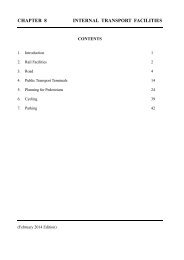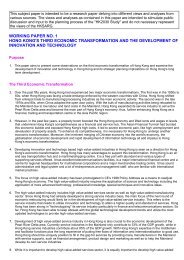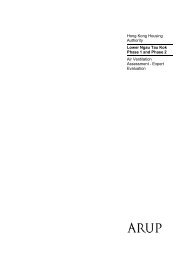Urban Design Guidelines For Hong Kong
Urban Design Guidelines For Hong Kong
Urban Design Guidelines For Hong Kong
You also want an ePaper? Increase the reach of your titles
YUMPU automatically turns print PDFs into web optimized ePapers that Google loves.
<strong>Design</strong> <strong>Guidelines</strong> for Layout Planning<br />
An Objectives-Based Approach to Layout Planning<br />
It is first important to define the objectives to be achieved by the layout plan after<br />
careful analysis of the opportunities and constraints of the development area and<br />
its context. A number of urban design objectives has been identified below which<br />
forms the basis of layout planning for various land uses:<br />
Issue<br />
Context<br />
Objectives<br />
Protect and enhance the characteristics which give<br />
the city its unique recognisable image. <strong>For</strong> example<br />
in the Metro area the natural setting consists of:<br />
(A) Mountain Backdrop and (B) Water front.<br />
The above objectives should be considered in all development proposals to see if<br />
they are applicable to the context. In general, aspects for consideration in<br />
considering and preparing layout plans include building forms, building height,<br />
podium and setback, orientation and alignment of building blocks, vehicular and<br />
pedestrian circulation, car parking provision, landscaping and open space provision.<br />
They are more or less relevant but can be applied in different ways and in different<br />
contexts. Analytical work should therefore come first as it is a fundamentally<br />
important stage for designers and town planners in producing layout plans.<br />
The following examples are for illustrative purpose with notional sketch layout plans<br />
and 3-dimensional drawings.<br />
Pedestrian Circulation<br />
Vehicular Circulation<br />
Open Space<br />
Conservation<br />
Create a safe, convenient, comfortable and legible<br />
pedestrian circulation.<br />
Create a legible user-friendly efficient transport<br />
network.<br />
Create coherent open space framework and define<br />
urban spaces.<br />
Conservation of distinct districts, character areas,<br />
and buildings of historical, cultural, or social value.<br />
<strong>Urban</strong> <strong>Design</strong> <strong>Urban</strong> <strong>Guidelines</strong> <strong>Design</strong> Guidlines for <strong>Hong</strong> for <strong>Kong</strong> <strong>Hong</strong> 25<br />
<strong>Kong</strong>


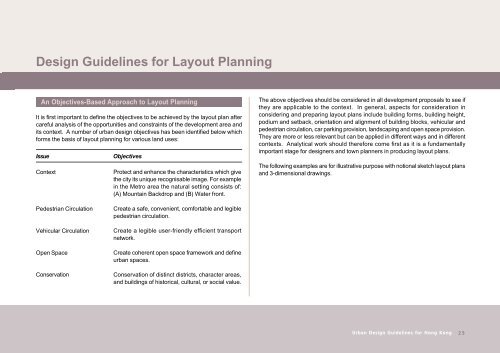
![download PDF version [2.6 MB]](https://img.yumpu.com/51515637/1/190x135/download-pdf-version-26-mb.jpg?quality=85)
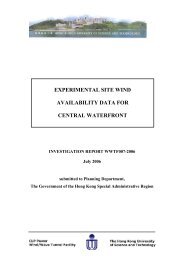
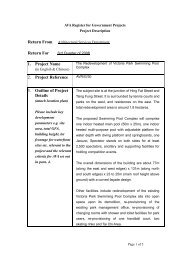

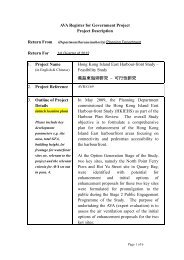
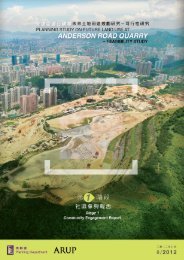
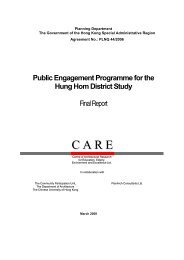
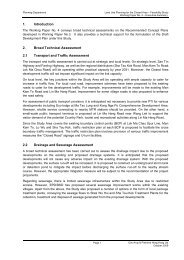
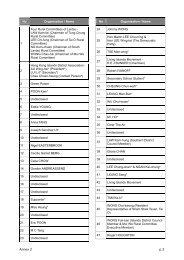
![download PDF version [950 KB]](https://img.yumpu.com/41776329/1/184x260/download-pdf-version-950-kb.jpg?quality=85)
